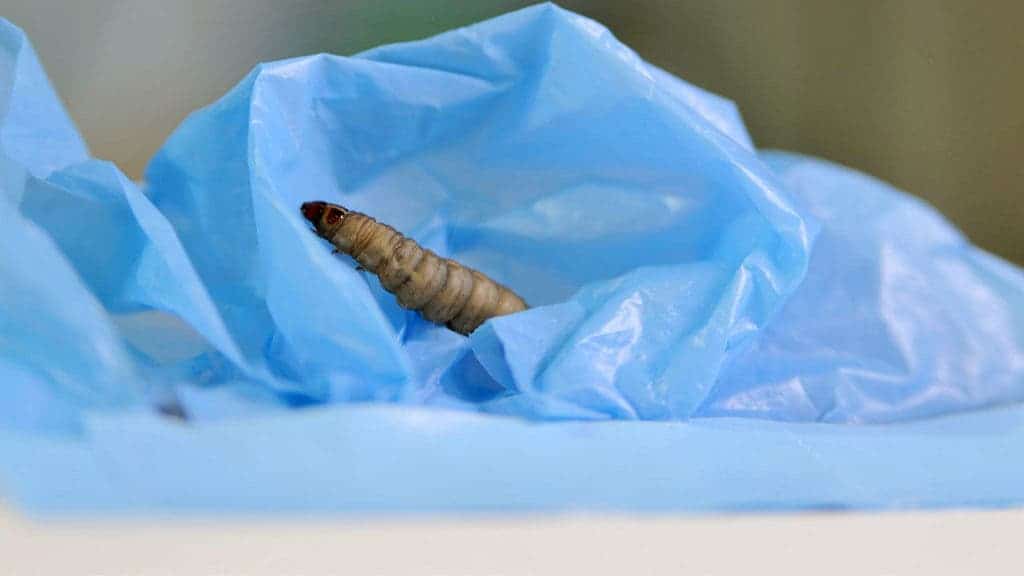Each year, an estimated 500 billion to 1 trillion plastic bags are consumed worldwide, most of which end up in landfills where they hurt the environment. The worst damage plastic bags cause is arguably to marine wildlife. Tens of thousands of whales, birds, seals and turtles are killed every year after they ingest the plastic bags which they mistake for jellyfish. This is why some nations and municipalities have banned disposable plastic bags altogether but the effects are still minimal at best.

Like any complex problem, not one but a mix of solutions is required, and sometimes help can come from the least likeliest of places. Take waxworms for instance. These are the larvae of the greater wax moth (Galleria mellonella) which thrive on beeswax. They’re a real nuisance to beekeepers who regularly have to flush them out else weakened hives might collapse entirely. But when amateur beekeeper Federica Bertocchini of the Institute of Biomedicine and Biotechnology of Cantabria in Spain tended one of her hives, she made a startling discovery.
After cleaning one of her empty hive boxes, she collected all of the caterpillars in plastic bags to dispose of later. The waxworms outsmarted her, though. Much to her surprise, Bertocchini found her plastic bags were riddled with holes. The caterpillars had made a run for it by munching through the notoriously difficult to break down plastic bag. They were very fast too. A plastic bag became riddled in holes after only 40 minutes. Some 12 hours later, you couldn’t recognize it used to resemble a bag anymore.
Having an eye for science, Bertocchini enlisted the help of colleagues to learn more about this striking behaviour. Remarkably, the waxworms seem capable of converting the polyethylene into ethylene glycol, which can be used by the industry to make useful products such as antifreeze. This also showed that the caterpillars were capable of digesting the plastic not just munching their way out. A lot of animals eat plastics, as we all have sadly come to know.

“The caterpillars are not just eating the plastic without modifying its chemical make-up,” says co-author Paolo Bombelli, a biochemist at the University of Cambridge. “We showed that the polymer chains in polyethylene plastic are actually broken by the wax worms.”
We don’t know yet why this worm is capable of digesting the worm but it’s likely because it’s chemical similar to its favorite food: beeswax. Breaking down both polyethylene and beeswax involves similar types of chemical bonds. “Wax is a polymer, a sort of ‘natural plastic,’ and has a chemical structure not dissimilar to polyethylene,” Bertocchini explained.
According to the study, 100 wax worms can eat 92 milligrams of plastic in just half a day. The waxworm isn’t the first animal we know of that can digest plastic. Mealworms can eat and break down polystyrene, and there are some bacterial species that can break down poly(ethylene terephthalate) (PET). The waxworm, however, is the fastest plastic gobbler of them all.
At the same time, you can’t let loose an armada of waxworms into a landfill and hope they do all the dirty work for us. The nastiest part of a landfill is the lack of oxygen which would kill the worms pretty fast. Instead, researchers think we can isolate the worm’s digestive enzyme and turn it into some chemical weapon against plastic.
“The next steps for us will be to try and identify the molecular processes in this reaction and see if we can isolate the enzyme responsible. If a single enzyme is responsible for this chemical process, its reproduction on a large scale using biotechnological methods should be achievable,” Bombelli said.






